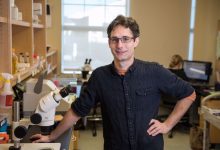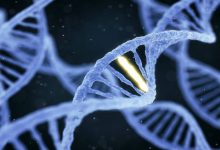
Transposons are the DNA sequence which jumps from one position to another within a genome which in turn causes mutations. But little is known about when and where their movements occur in developing reproductive cells. Around half of our DNA sequences are composed of jumping genes. These mutations can also lead to some genetic disorder like hemophilia and cancer.

In a recent study, a team of researchers from Carnegie Institution For Science has developed techniques which can help in tracking mobilization of jumping genes. During the development of the egg, there are special cells called nurse cells whose function is to provide nutrition to the developing eggs. So the group of jumping genes called retrotransposons hijacks the nurse cells and produce invasive material (copies of themselves called virus-like particles) that move into a nearby egg and then mobilize into the egg’s DNA.
The genome of animals has an inbuilt powerful system which has the ability to suppress the jumping gene by using non-coding RNA called piRNA. But sometimes jumping genes endures piRNA and escape its control.
During their study, they used Fruit fly as their study model and turned off the expression of piRNA which in turn increases the activity of jumping genes. After that, they monitored the jumping gene movement during egg development process. Finally, they found the tactic which allows the jumping gene to move.
They observed that the jumping genes in stem cells were not moving much due to the presence of only two copies of the genome which restricted its mobilization while the nurse cell has thousands of copies of genome per cell which can act like factories for the production of the multiple numbers of a virus-like particle capable of integration.
“However, they didn’t integrate into nurse cells where they were produced. Rather, they waited while they were transported into an interconnected egg cell, and then added hundreds, if not thousands, of new copies of themselves into the egg DNA. Our research shows how parasitic genetic elements can time their activity and distinguish between different cell types to robustly propagate to drive evolutionary change and cause disease.”
“My group has found that egg development in mammals uses many of the same mechanisms as in the fruit fly, such as feeding the developing egg using nurse cells. So the Zhang group’s findings are likely to be important for understanding mammalian evolution and disease as well,” commented Allan Spradling, who is a pioneer researcher on studying the egg development in both fruit fly and mammals and a longtime scientist at Carnegie’s Department of Embryology.
This studyled researchers to solve the long-lasting puzzle that how they mobilize as animal prepare for the next generation.






